-
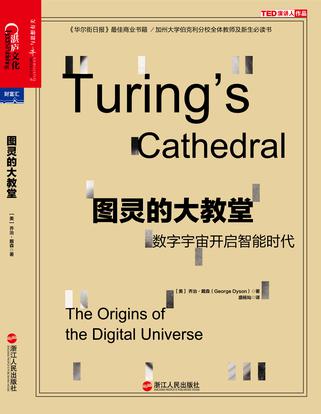
图灵的大教堂
1936年,时年24岁的图灵宣称:“发明一台可用于计算任意可计算序列的单一机器是有可能的。”在《图灵的大教堂》一书中,作者乔治•戴森着重介绍了一小群人,为首的是供职于新泽西州普林斯顿高等研究院的约翰•冯•诺依曼,他参与建造了最早的一台计算机,以实现艾伦•图 灵提出的通用机的愿景。他们的工作打破了用于表意的数字和用于运算的数字之间的区别,世界因此而改变。 科学家们使用5千字节的内存(相当于现代计算机桌面上显示的光标所分配的内存大小),在天气预测和核武器设计方面,都获得了前所未有的成功。同时,他们还利用空闲时间解决各种问题——从病毒的进化到恒星的演变。 戴森教授的叙述既具有历史意义,又富于预见性,为第二次世界大战后期数字宇宙的爆炸提供了新的且重要的信息。代码和计算机的兴起伴随着两大历史性的发展:生物学自我复制序列的破译和氢弹的发明。最具破坏性和最具建设性的人类发明同时出现并不是巧合。 -
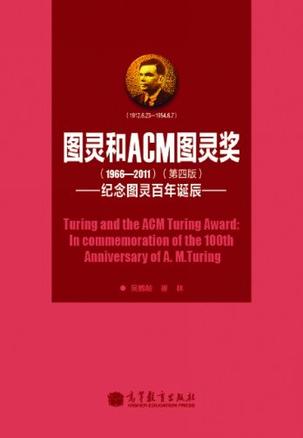
图灵和ACM图灵奖
《图灵和ACM图灵奖(第4版):纪念图灵百年诞辰》介绍了图灵及自1966年至今图灵奖的获得者的工作和事迹。通过对20世纪下半叶及21世纪初有代表性计算机科学家的介绍,多方位、多视角地反映计算机科学技术半个多世纪来的发展历程。《图灵和ACM图灵奖(第4版):纪念图灵百年诞辰》在一定程度上反映了计算机体系结构、程序设计语言、算法设计与分析、操作系统和编译程序、数据库技术、计算复杂性理论、软件工程、人工智能等计算机科学技术主要分支的形成过程和发展概况。通过追寻成功者的足迹,给人以必要的启迪,读者可以从阅读中吸取成长和成功所必需的养分。 -
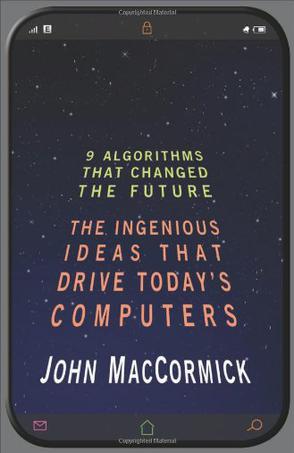
Nine Algorithms That Changed the Future
Every day, we use our computers to perform remarkable feats. A simple web search picks out a handful of relevant needles from the world's biggest haystack: the billions of pages on the World Wide Web. Uploading a photo to Facebook transmits millions of pieces of information over numerous error-prone network links, yet somehow a perfect copy of the photo arrives intact. Without even knowing it, we use public-key cryptography to transmit secret information like credit card numbers; and, we use digital signatures to verify the identity of the websites we visit. How do our computers perform these tasks with such ease? This is the first book to answer that question in language anyone can understand, revealing the extraordinary ideas that power our PCs, laptops, and smartphones. Using vivid examples, John MacCormick explains the fundamental "tricks" behind nine types of computer algorithms, including artificial intelligence (where we learn about the "nearest neighbor trick" and "twenty questions trick"), Google's famous PageRank algorithm (which uses the "random surfer trick"), data compression, error correction, and much more. These revolutionary algorithms have changed our world: this book unlocks their secrets, and lays bare the incredible ideas that our computers use every day. -
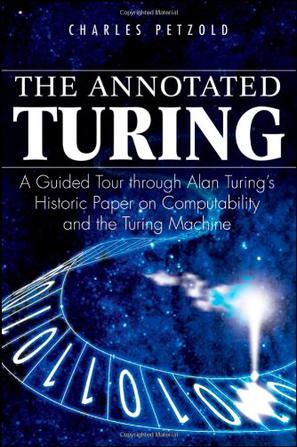
The Annotated Turing
(excerpts from my proposal for the book) Anyone who has explored the history, technology, or theory of computers has likely encountered the concept of the Turing Machine. The Turing Machine is an imaginary — not even quite hypothetical — computer invented in 1936 by English mathematician Alan Turing (1912–1954) to help solve a question in mathematical logic. As a byproduct, Turing also founded the field of computability theory — the study of the abilities and limitations of digital computers. Although the concept of the Turing Machine is well known, Turing’s original 1936 paper is only rarely read. This neglect may have something to do with the paper’s title — “On Computable Numbers, with an Application to the Entscheidungsproblem” — and perhaps the paper’s extensive use of a scary German gothic font. That’s too bad, because the paper is not only a fascinating read but a milestone in the history of computing and 20th century intellectual thought in general. This book presents Turing’s original 36-page paper (and a follow-up 3-page correction) with background chapters and extensive annotations. Mathematical papers like Turing’s are often terse and cryptic. I have elaborated on many of Turing’s statements, clarified his discussions, and provided numerous examples. Interwoven into the narrative are the highlights of Turing’s own life: his years at Cambridge and Princeton, his secret work in cryptanalysis during World War II, his involvement in seminal computer projects, his speculations about artificial intelligence, his arrest and prosecution for the crime of “gross indecency,” and his early death by apparent suicide at the age of 41. The book is divided into four parts: Parts I and II together are about 200 pages in length and cover the first 60% of Turing’s paper, encompassing the Turing Machine and computability topics. This part of the book is entirely self-contained and will be of primary interest to most readers. Part III is a faster paced look at the remainder of Turing’s paper, which involves the implications for mathematical logic. Some readers might want to skip these chapters. Part IV resumes the more "popular" presentation showing how the Turing Machine has become a vital tool in understanding the workings of human consciousness and the mechanisms of the universe. Although I expect the primary readers of the book to be programmers, computer science majors, and other “techies,” I have tried my best to make the book accessible to the general reader. There is unavoidably much mathematics in the book, but I have tried to assume that the reader only has knowledge of high-school mathematics, and probably a foggy one at that. -
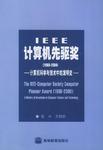
IEEE计算机先驱奖(1980-2000):计算机科学与技术中的发明史
本书是《ACM图灵奖--计算机发展史的缩影》一书的姊妹篇。IEEE计算机先驱奖已经颁发了20届,共有108位计算机科学技术工作者获奖,其中有22位也是图灵奖的获得者。IEEE计算机先驱奖兼顾的范围较广,并打破了东西方的界限,有一批前苏联和东欧国家的学者入围。这都有利于读者更全面地了解世界各国计算机发展的情况。在系统设计与开发,尤其是在硬件方面为计算机科学技术的发展作出卓越贡献的学者均被包括在内。本书对于我国年轻的计算机工作者及所有对计算机发展史感兴趣的读者来说都是一本难得的收藏之作。 -
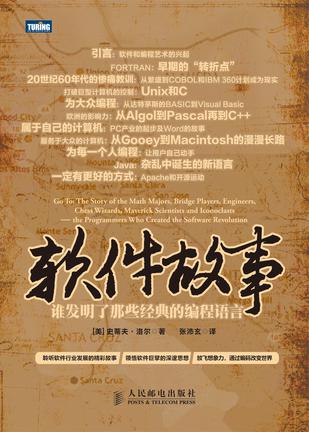
软件故事
“本书语言流畅细腻,读起来如沐春风。它犹如一部波澜壮阔的计算机史诗,讲述了软件革命的恢弘历史,以及中流砥柱们的光辉事迹。故事并不是断断续续的,因为作者采用了微型传记的形式……他把历史写成了优美的散文,生动迷人又严谨有度。” ——David Gelernter,《纽约时报》 “这是一本给人启迪的著作,完美地展现了想象力的巨大力量。如果你想象得到,并把它编成代码,那么一定能够改变世界!” ——Boston Sunday Globe “本书把难懂的技术概念讲解得通俗易懂。对于那些对计算机内在结构好奇的人,这是一本能让其豁然开朗的好书。计算机科学界的前辈John McCarthy曾向作者抱怨过新闻记者的无知,本书就是作者对此作出的回应……与计算机行业相关的所有新闻记者都应该读一读这本书。” ——《纽约时报书评》 “这不是一本通常意义上的书,而是一部史诗。它讲述的不是技术,而是那些设计编程语言和计算机软件的名人的故事……本书内容清晰易懂,简明扼要。软件工程让程序员不需要材料和工具也能有所创造,他们为此兴奋不已。他们能够凭空创造新的事物,唯一的限制就是自己的想象力。” ——《国际先驱论坛报》 “如果本书作者是一名程序员,那么他写的代码一定清晰有序,不需要复杂的结构或者奇怪的快捷方式就能跳转到正确的子程序上;他的写作风格也是如此。本书化繁为简,让读者与数学专家、桥牌高手、象棋大师、特立独行的科学家、批判传统观念的人,以及掀起软件革命的程序员们进行了一次愉悦的会面。” ——《新闻周刊》 “本书展现了技术缔造者们面对的挑战,是本旷世杰作。” ——《自然》周刊 聆听软件行业发展的精彩故事 领悟软件巨擘的深邃思想 放飞想象力,通过编码改变世界 Steve Lohr(作者)《纽约时报》高级作家和技术通讯记者,U .S. v. Microsoft一书合著者,现居住于纽约。 张沛玄(译者)1992年毕业于北京理工大学飞行器工程系固体火箭发动机专业,获得工学学士学位。2001年重回母校管理与经济学院就读,2004年毕业并获工商管理硕士学位。早年他曾从事软件开发,担任IT公司高级管理工作多年。